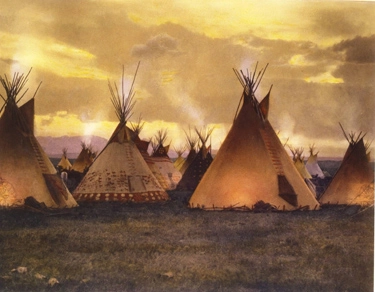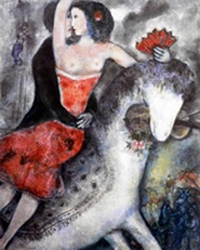ARAS Connections: Image and Archetype - 2015 Issue 1

Virginia Beane Rutter served for many years on the National Board of ARAS as a representative from San Francisco. In this edition of ARAS Connections she presents an extraordinary series of modern paintings about the Amor and Psyche myth. Virginia has been a student and scholar of women’s initiation patterns and ceremonies for decades. She is in the fine lineage of early followers of Jung who comprised his 1929 dream seminar. These students were asked by Jung to study the archetypal dream symbolism of a Swiss businessman, one of whose dreams had the powerful image of a large cauldron filled with metal objects, some of which were crescents and some of which were crosses. The early group was divided into two and Joe Henderson joined Esther Harding’s section which focused on the “crescent”. This began both Henderson’s and Harding’s life long interest in rites of initiation in men and women. It is safe to say that Virginia Beane Rutter has carried on that early tradition in an unparalleled way in terms of her study of art, archaeology, and psychology. Most importantly, she knows initiation patterns in depth from her exquisitely careful and insightful clinical work. It is rare for an analyst to be both scholarly adept and clinically astute. Beane Rutter’s studies of women’s initiation appear in three books, Woman Changing Woman: Restoring the Mother-Daughter Relationship, Celebrating Girls: Nurturing and Empowering our Daughters and Embracing Persephone: How to be the Mother You Want for the Daughter You Cherish. In addition, she has collaborated with Tom Kirsch and Tom Singer in editing Initiation: The Living Reality of an Archetype. And most recently, Virginia has teamed up with Tom Singer to co-edit two books based on their Greek Santorini Conferences. The first, Ancient Greece, Modern Psyche: Archetypes in the Making will be followed this spring by Ancient Greece, Modern Psyche: Archetypes Evolving. Whether Virginia is exploring the dreams of modern women and men or the ancient wall paintings of Thera in Santorini, she brings the same beautiful eye to unraveling and understanding the mysteries, myths and dreams of ancient and modern people alike. In a later edition of ARAS Connections another spectacular paper will be published on the Santorini wall paintings and the ancient Greek patterns of young women’s initiation rites they portray.
Amor and Psyche or The Journey

Introduction
I first encountered the Jungian interpretations of the Roman myth, Amor and Psyche, in the 1970’s when I was new to Jungian psychology. The texts included Erich Neumann’s book Amor and Psyche: the Psychic Development of the Feminine, published in the 1950’s Marie Louise von Franz’s The Golden Ass of Apuleius: The Liberation of the Feminine in Man, in 1970, and Robert Johnson’s She!: A contribution to understanding Feminine Psychology, in 1976. Psyche, therefore, became a model for “feminine development” or a model of a man’s anima in Jungian scholarship.
This classical research was based on three chapters of the novel The Golden Ass of 2 C.E. by Lucius Apuleius. He recorded his version of the myth using the Roman name of the god: Amor. In the book, an old woman, servant to robbers in a cave, tells the story to soothe a young woman whom the robbers had kidnapped from her betrothed. Apuleius’ journey as the protagonist of the novel leads to his initiation into the mysteries of Isis and Osiris.
Reviewing this literature in 2015, I find the classical examinations formulaic in their blanket application of the Jungian concepts of anima and animus. They also adhere to the conventionality of traditional gender roles as Jung defined them, that is “feminine” as eros, “masculine” as logos, (ironic, given that Eros/Amor is a male god!) Erich Neumann also defines the feminine as the unconscious and the masculine as consciousness. These gender definitions are limited and dated.
While much of the archetypal discussion in these scholars’ interpretations has validity, especially within the Greek and Roman cultures, the individual woman as female gets lost in the lofty (even brilliant) use of Jungian principles. As an example, these scholars do not take up the embodied fact of Psyche’s pregnancy as a psychological factor during the course of her initiatory challenges. The real experience of gestation, either literal or symbolic, and its effect on a woman and her psyche is therefore buried in the avalanche of archetype and symbol. For the myth to have relevance for a contemporary woman, her cultural and particular life circumstance must be revealed. A woman in the 21st century ostensibly has choices about her sexuality, her career, mothering, marrying or living an independent life.
Read Amor and Psyche or The Journey in its entirety.
The Native American Sense of the Sacred: The Tipi as a Collective Transformational Vessel

This beautiful article by Joan Golden-Alexis begins inside the circle of a tipi at the Brooklyn Museum, New York and continues in growing circles to describe the art and life of the Native Americans as the underlying structure of their culture. We experience an extraordinary sense of wholeness in their way of bridging earth and sky – as mundane and sacred, masculine and feminine, the visible world and the invisible. This is part of our series of presentations from The Art and Psyche in the City Conference held at New York University, 2012. By a lucky coincidence, the Metropolitan Museum in New York City has just opened an astonishingly beautiful show called The Plains Indians: Artists of Earth and Sky. - Ami Ronnberg
Western science, following Roger Bacon, believed man could force nature to reveal its secrets; the Sioux simply petitioned nature for friendship.
Vine Deloria, Jr.
This project begins when I stand inside a tipi at the Brooklyn Museum. The tipi’s buffalo skins seem like a translucent glowing parchment revealing huge illuminated spirit animals painted over the entire outside cover. Inside I feel surrounded by and held in the embrace of their protective presence. At the same time that I am aware of the poles that cross these shadow-like silhouettes, reaching out through the smoke hole to the zenith, I am aware that I am standing in a circle. I feel drawn up to the sky, held by the earth and enclosed in something otherworldly and deeply instinctual all at the same time. I feel transported into another realm and begin to understand what Jung meant when he said, that the American Indians live under a spell—the spell of their land, and the spell of their sky. I am drawn to understand both the power of and the inner tranquility that this experience evokes.
Jung describes the white Americans as disconnected from their land and its rich offerings, zooming across its surface with a resultant loss of connection with their own bodily rhythm and their depth. For Jung the white Americans’ disconnection from the land results in dissociation and a split in their psyche.
In contrast, “under the spell of their country” (C.G. Jung, Vol. 10 §960) the American Indian has access to an internal dimension; this allows for fluidity, a connecting and interweaving of the mundane and the sacred, and the conscious and the unconscious. As a result the American Indian resonates with this inaudible cosmic pulse, responsive to both time and place. For him life is not a shallow horizontal stream flowing out of an impatiently forgotten past through the present into a future one is hurrying to reach. Rather, it has a vertical dimension that cups past and future in a timeless present. (Waters, p. 335) This allows entrance into something ancient and primordial—a fluid space, which brings the American Indian’s sacred symbols into consciousness. These symbols then take on a defining reality, penetrating his character, providing him with an essential dignity.
Read The Native American Sense of the Sacred: The Tipi as a Collective Transformational Vessel in its entirety.
The Poetry Portal

Thank you for the wonderful poems we received inspired by the image of the "Door," which you can read here. As I write this we are almost out of the cold grip of winter, making me think of adventures and escape. And not just any escape. I want to join the circus- that traveling troupe of acrobats, animals, and pageantry that give rise to feats of daring and adventure. We are enclosing Chagall's image, "The Circus Rider" to fire up your imagination. We invite you to write your most beloved poem, to be the bareback horse acrobat in the Circus, the ringmaster or any of your favorite performers. Close your eyes, hear the kaleidoscope of music as the pageantry begins under the Big Tent. Please send us your poetry to info@aras.org by May 15th, 2015.
Contents
Become a Member of ARAS!
Become a member of ARAS Online and you'll receive free, unlimited use of the entire archive of 17,000 images and 20,000 pages of commentary any time you wish—at home, in your office, or wherever you take your computer.
The entire contents of three magnificent ARAS books: An Encyclopedia of Archetypal Symbolism, The Body and The Book of Symbols are included in the archive. These books cost $330 when purchased on their own.
You can join ARAS Online instantly and search the archive immediately. If you have questions, please call (212) 697-3480 or email info@aras.org
We Value Your Ideas
As our newsletter grows to cover both the ARAS archive and the broad world of art and psyche, we're eager to have your suggestions and thoughts on how to improve it. Please send your comments to info@aras.org. We look forward to your input and will reply to every message.
Subscribe
If you're not already a subscriber and would like to receive subsequent issues of this newsletter by email at no cost, e-mail us at newsletter@aras.org.
